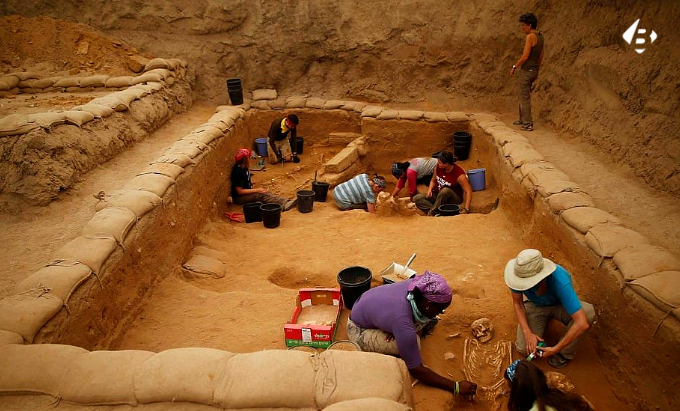
Hidden beneath layers of sand and sediment in Utah’s West Desert, a remarkable discovery has emerged: fossilized human footprints dating back to a staggering 23,000 years ago. This unprecedented find shatters long-held beliefs about the arrival of the first Americans, pushing back their presence on the continent by thousands of years and painting a vivid picture of their lives and travels.
Unearthing a Forgotten Past:
These ancient footprints, numbering over 88, were unearthed at the White Sands National Park and the US Air Force Utah Test and Training Range. The prints, belonging to both adults and children, reveal fascinating details about the individuals who made them: their approximate age, size, and even walking patterns. This invaluable information offers a glimpse into the lives of early Americans, providing clues about their family structures, social interactions, and movements across the land.
Rewriting the Narrative:
Previously, the Clovis culture, dating back to around 13,000 years ago, was considered the earliest evidence of humans in North America. However, the discovery of these much older footprints challenges this long-held belief. This finding suggests that humans were present on the continent much earlier than previously thought, raising questions about their migration routes, cultural practices, and interaction with the environment.
A Window into the Ice Age:
Beyond their historical significance, the footprints offer a unique window into the Ice Age landscape. The presence of animal tracks alongside the human prints provides insights into the fauna that coexisted with early humans, including now-extinct giants like mammoths and ground sloths. This unique combination of evidence helps us reconstruct the vibrant ecosystems of the Ice Age and the role early humans played within them.
Unlocking the Mysteries:
While the discovery of these ancient footprints raises more questions than it answers, it undoubtedly marks a pivotal moment in our understanding of early human history. Further analysis of the prints and their surrounding environment, combined with ongoing archaeological research, will shed light on the lives and journeys of the first Americans, rewriting the story of their arrival and settlement in North America.
Join the conversation and share your thoughts on this remarkable discovery. How do these ancient footprints change our understanding of early human history? Let’s explore the mysteries of the past and piece together the fascinating story of our origins.
The discovery of 23,000-year-old human footprints in Utah is truly mind-blowing. It’s incredible how these ancient imprints provide a tangible connection to the lives of early Americans, reshaping our understanding of their presence on the continent. History unfolding beneath our feet!
These ancient footprints are like a time capsule, offering a glimpse into the daily lives of early Americans during the Ice Age. The fact that they predate the Clovis culture challenges established timelines and invites us to reconsider the complexity of human migration and adaptation in North America.
The White Sands discovery is a remarkable archaeological breakthrough. The footprints not only push back the timeline of human presence in North America but also offer a snapshot of a diverse ecosystem where humans coexisted with now-extinct giants. The story of our ancient past continues to captivate and surprise.
The ancient footprints found in Utah’s West Desert are a profound testament to the resilience and adaptability of early Americans. The discovery not only rewrites the narrative of their arrival but also invites us to imagine their daily lives, interactions, and journeys through a landscape that was vastly different yet eerily familiar.